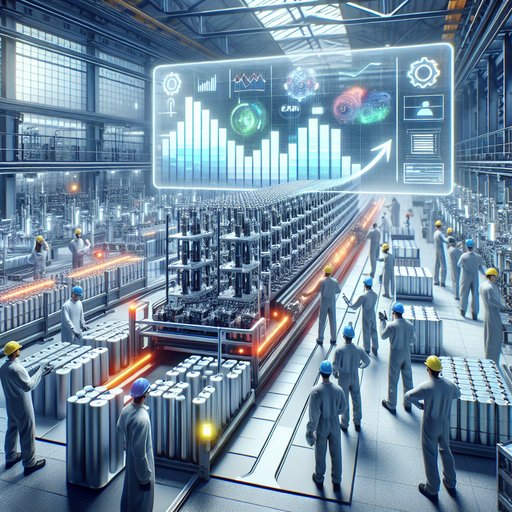
Continental AG enters Q4 2025 after a whipsaw year: a weak Q2 tied to a European auto slump, followed by a late‑September guidance raise on stronger Q3 execution, alongside a settlement with ex‑managers in the diesel affair and the ramp of a new Hanover tire plant. What changed is the balance between soft end‑market volumes and self‑help—cost control, mix in Tires, and new partnerships in electrification—tilting back toward cautious optimism. Revenue over the last twelve months stands at 39.58B, and the group kept its dividend signal intact as it leans on cash generation. This matters because Continental’s valuation and narrative hinge on improving margin quality, deleveraging and the durability of order intake into 2026. Sector‑wide, European auto suppliers face muted unit growth but rising EV penetration and tighter regulation that can both create content opportunities and squeeze pricing. For investors, the three‑year question is whether Q3’s momentum is repeatable in a fragile cycle—and whether governance clean‑up and capacity adds can translate into steadier free cash flow; the headline dividend yield at 4.02% underscores that income remains part of the story.

LG Energy Solution’s share price has climbed back toward its yearly peak, closing at KRW 438,500 on October 21, as management signaled steadier orders and continued progress on US capacity ramp‑up. The company remains a scale leader with trailing revenue of 25.16T, but profitability is thin as customer price resets and new‑plant start‑up costs weigh on margins. Recent updates — including extended supply agreements with global automakers and renewed staffing for US facilities — suggest improving utilization and policy visibility, yet cash outlays remain heavy as the firm localizes production for North American incentives. For investors, the pivot from volume growth to disciplined, cash‑generative growth will be the key swing factor over the next three years. In the battery sector, adoption is moving forward even as the broader auto market cools, keeping competition intense and technology choices (LFP vs. high‑nickel) fluid. The base case is a gradual margin rebuild as ramps mature, but the pace will depend on product mix, raw‑material trends, and subsidy qualification.

Panasonic Holdings’ three‑year story is pivoting harder toward automotive and energy as the stock climbs back toward its one‑year highs. Shares are up 41.18% over the past year, helped by milestones such as mass production at its new Kansas EV‑battery plant, AI‑enabled car components, and a solid‑state battery collaboration with Toyota. Under the hood, reported revenue of 8.23T yen masks uneven trends: autos and energy are gaining strategic weight while legacy electronics are more mixed; free cash flow is pressured by investment, yet liquidity and leverage look manageable. Sector context: EV adoption is re‑accelerating in Europe even as traditional auto production faces cost and employment pressures, and critical‑minerals supply remains tight. For investors, the “so what” is execution—if Panasonic converts capacity adds into dependable orders and stabilizes profitability, its earnings power and narrative could reset; if ramps slip or input costs bite, thin margins leave little cushion. The next few quarters will set the tone for how far the multiple can stretch into 2028.

CATL’s shares have rebounded into October after a volatile first half, as investors reassess growth and profitability in the battery cycle. The immediate change is faster profit momentum versus steadier sales: quarterly earnings growth rose 33.20% year over year while revenue growth was 8.30%, suggesting mix and cost control are doing more work than pure volume. Sentiment also improved alongside signs of recovering electric‑vehicle demand in Europe and steady energy‑storage orders, even as price competition remains intense. At the same time, China’s tighter export regime for certain critical materials has refocused attention on supply‑chain security and localization strategies, themes that matter directly for a global cell supplier. For investors across the EV supply chain, the question now is whether margins can be defended as industry capacity built in 2021–2023 continues to chase demand, and whether overseas expansion offsets any domestic softness. The sector is transitioning from hypergrowth to scale economics, where utilization, chemistry choice and integration with energy storage will drive returns.

Goodyear Tire & Rubber enters the next three years with a tougher setup: shares have slid toward the low end of their 52‑week range as operating margins remain thin and levered free cash flow is negative. What changed is a combination of softer year‑over‑year revenue trends and elevated balance‑sheet leverage, alongside a reset in pricing power after the post‑pandemic spike in input costs. Why it changed: replacement tire demand has been uneven across regions, auto production is no longer a tailwind, and dealers are keeping inventories tighter, while foreign‑exchange and freight have normalized from extremes. Why it matters: with revenue at 18.49B but total debt at 8.98B, capital allocation flexibility is constrained, so execution on cost, mix, and cash conversion carries outsized weight for equity holders. Sector‑wide, global tire makers are navigating a shift toward larger‑rim and EV‑rated products, intense price competition in value segments, and volatile raw materials—factors that will define who earns through the cycle.
- Lear (LEA) three‑year outlook: cash flow steadies as EV content and pricing set the narrative
- Aptiv’s three‑year outlook: EV content tailwinds meet execution and margin risks
- Enbridge (ENB) three-year outlook: steady cash flows vs. leverage as rates and regulation evolve
- Chevron’s 3‑year outlook: cash‑flow resilience, LNG options and dividend discipline





